Checkout Nigerian currency from past to present
As a nation, Nigeria has come a long way, from the days of the colonial masters when their currency was the only thing allowed for buying and selling, to this period when our own Naira is the legal tender.
Before the colonization and subsequent creation of the place we now know as Nigeria, inhabitants of the land were known to execute their businesses with the help of 'currencies' like cowries, exchange of salt, animals and farm produce and also textiles, in an act known as trade by barter.
The west African Currency Board was responsible for issuing currencies (which included banknotes and coins) from the year 1912 to 1959. The currencies in circulation then were pounds, pence and shillings.
PAY ATTENTION: Get all the latest gossips on NAIJ Gossip App
In 1959 the Central Bank of Nigeria (CBN) started issuing the Nigerian currency notes, and in 1962, the legal tender was officially changed again.
Following the Nigerian civil war, the currency was again changed in 1968 as a war strategy, and in 1973, the naira and kobo became the official legal tender.
Legit.ng Gossip takes you down memory lane and presents a brief history of Nigeria's currency in pictures:
1. Trade by barter (exchange of farm produce, animals, textile, copper, etc)
This system was adopted by people who lived in the same locality, and it involved giving what you had in exchange for what you needed. This exchange occurred mostly between individuals and their deities, and between friends and neighbours.
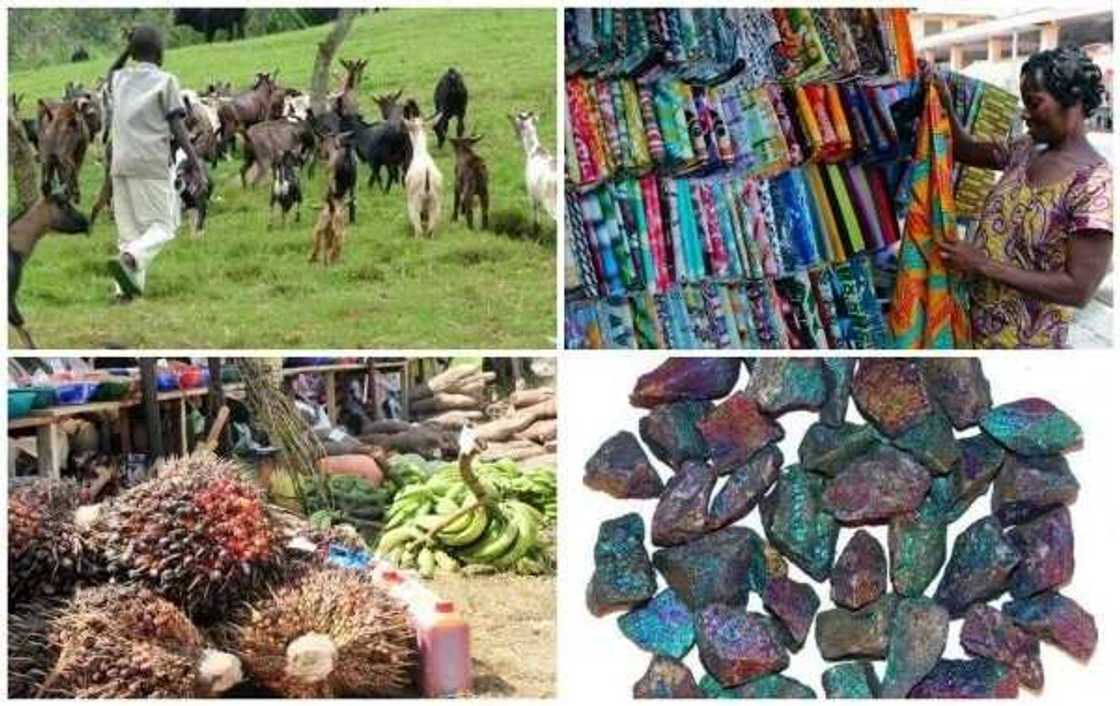
2. Cowries
Cowries were used for buying and selling before banknotes and coins were introduced into the Nigerian economy. Payment of cowries was mostly made in cups or in bags.
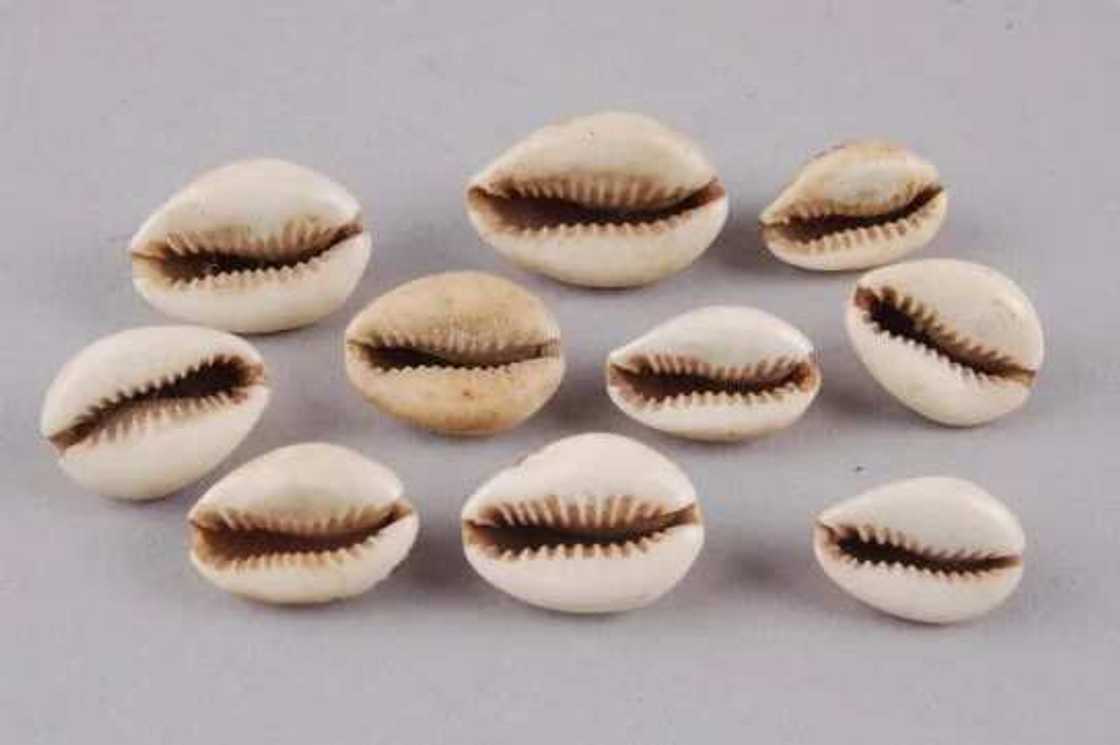
3. The Nigerian shillings issued in 1958/1959
Even though this denomination is no longer in use in present day Nigeria, the shilling is the legal tender in Kenya and Uganda. If you happen to have about 5000 Shillings, you'd be N15,000 richer in Kenya and just about N400 richer in Uganda.
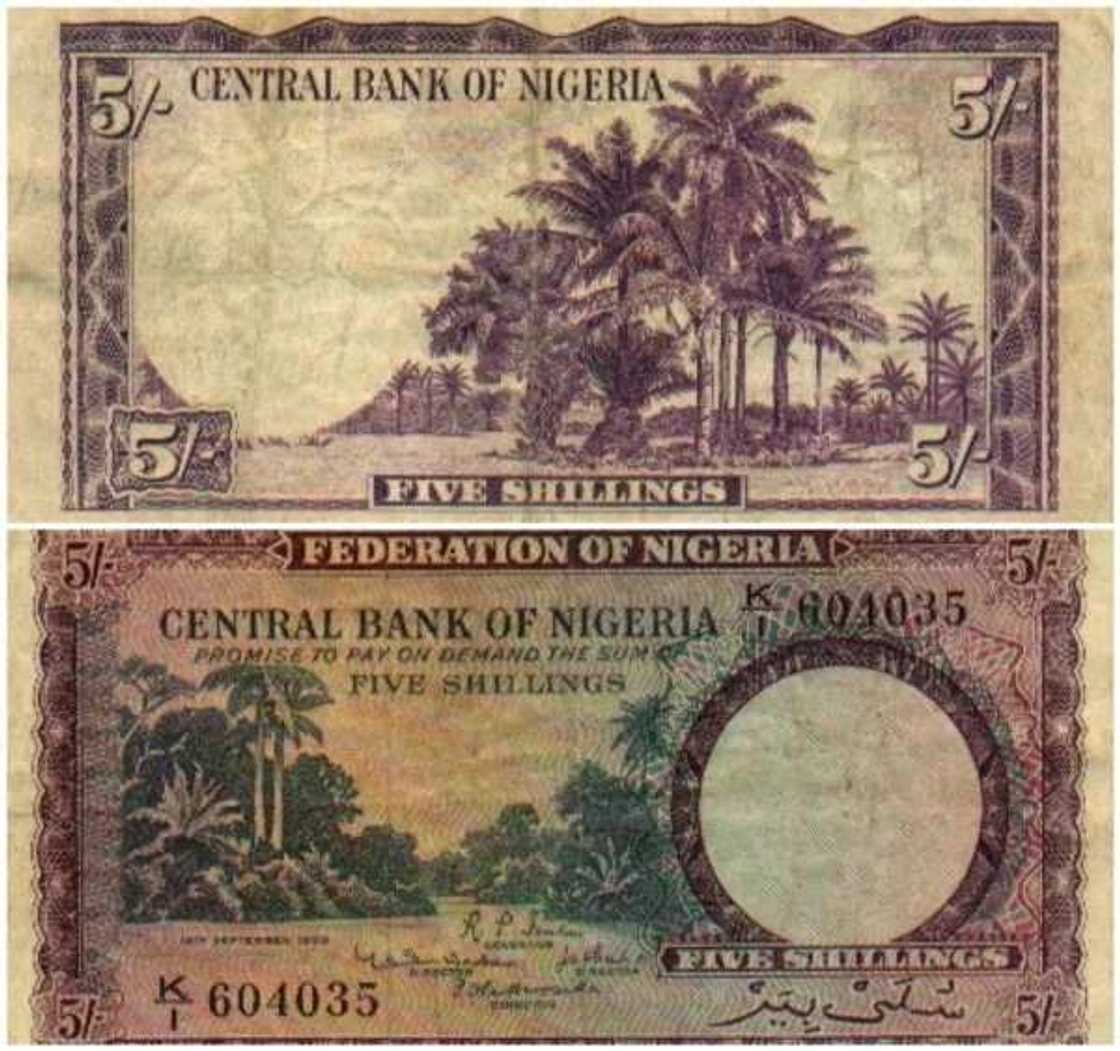
4. The Nigerian pound issued in 1967:
Just in case you didn't know before or you may have forgotten, this is a reminder that the legal tender in Nigeria used to be the pound.
Right now, anyone who possesses a large amount of this currency might be regarded as a rich person, judging by the current exchange rate of the pound to the naira, which is pegged at N565 to £1.
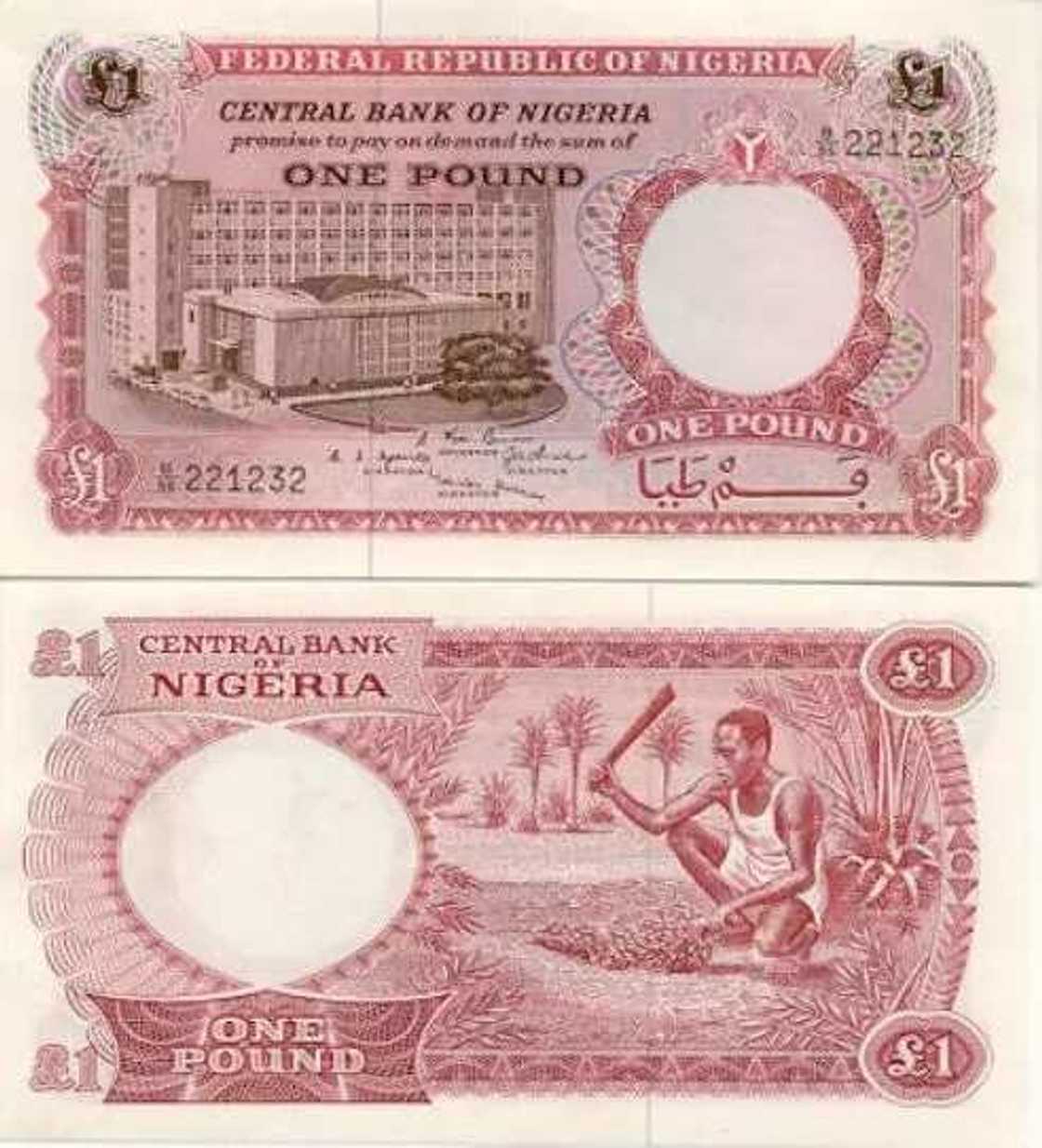
5. Another five shilling note issued in 1968
As a war strategy, the shillings notes were changed to reflect different colours. While the banknotes were changed, the coins remained unchanged and in circulation.
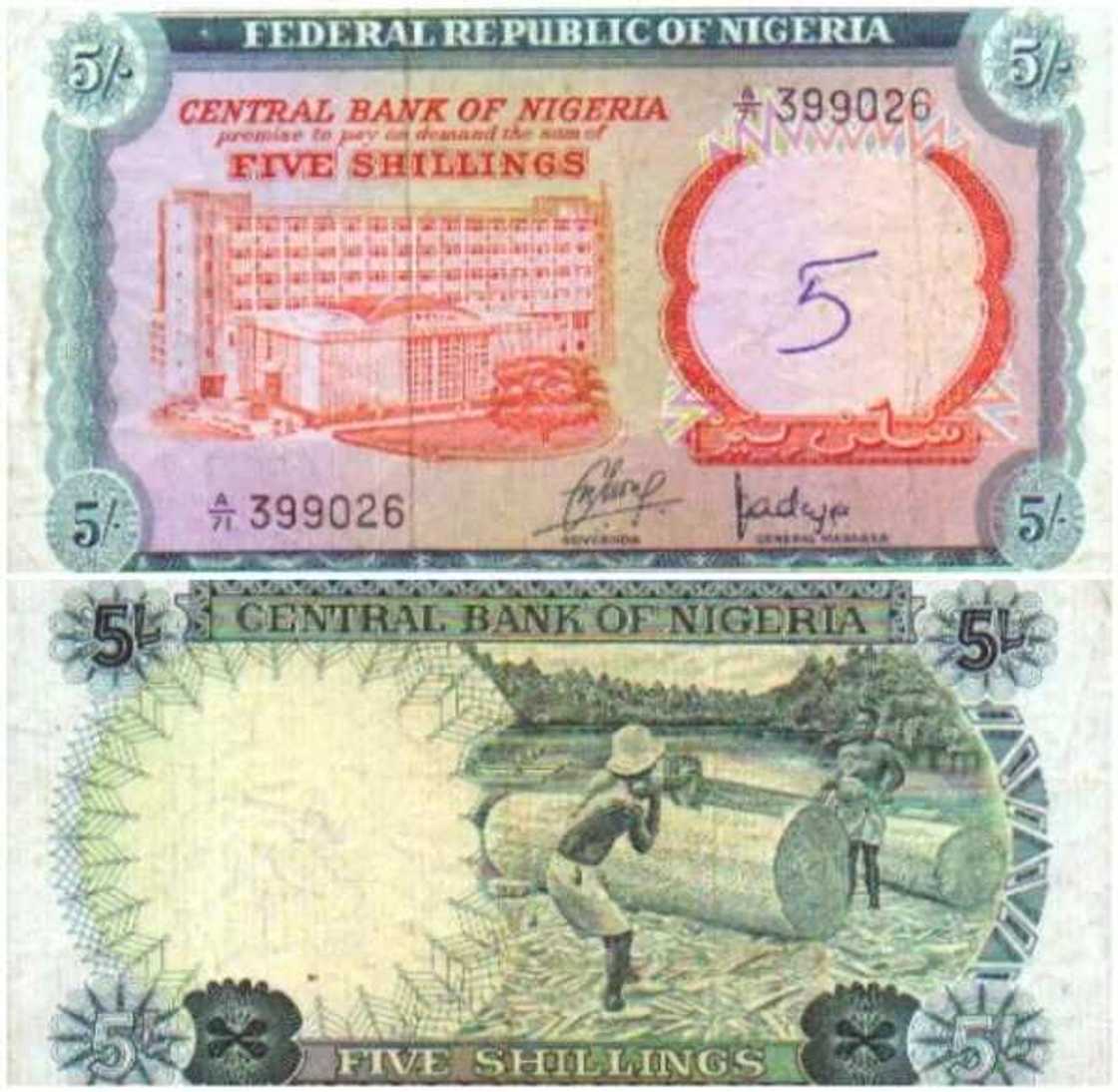
6. One pound notes were reintroduced in a different colour in 1968
All the pound notes had their colours changed, including the five pound notes.
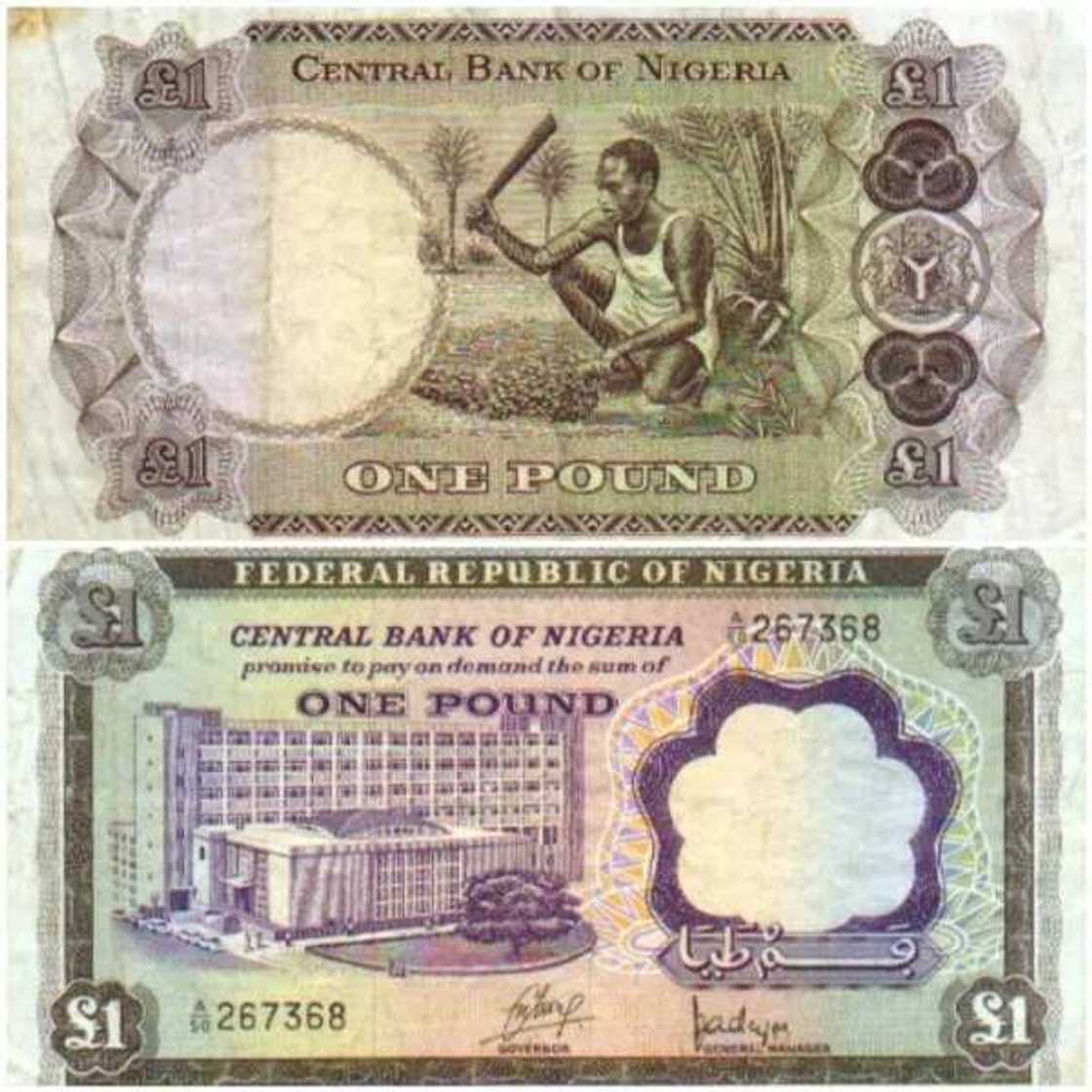
7. 50 kobo was introduced in 1973, and taken off the market in 1978
Just five years after the fifty kobo note was first circulated in Nigeria, it was decided that it should be taken off the market. The nickel-plated coins for the same denomination were introduced in 1989 and eventually withdrawn from the market in 2007.
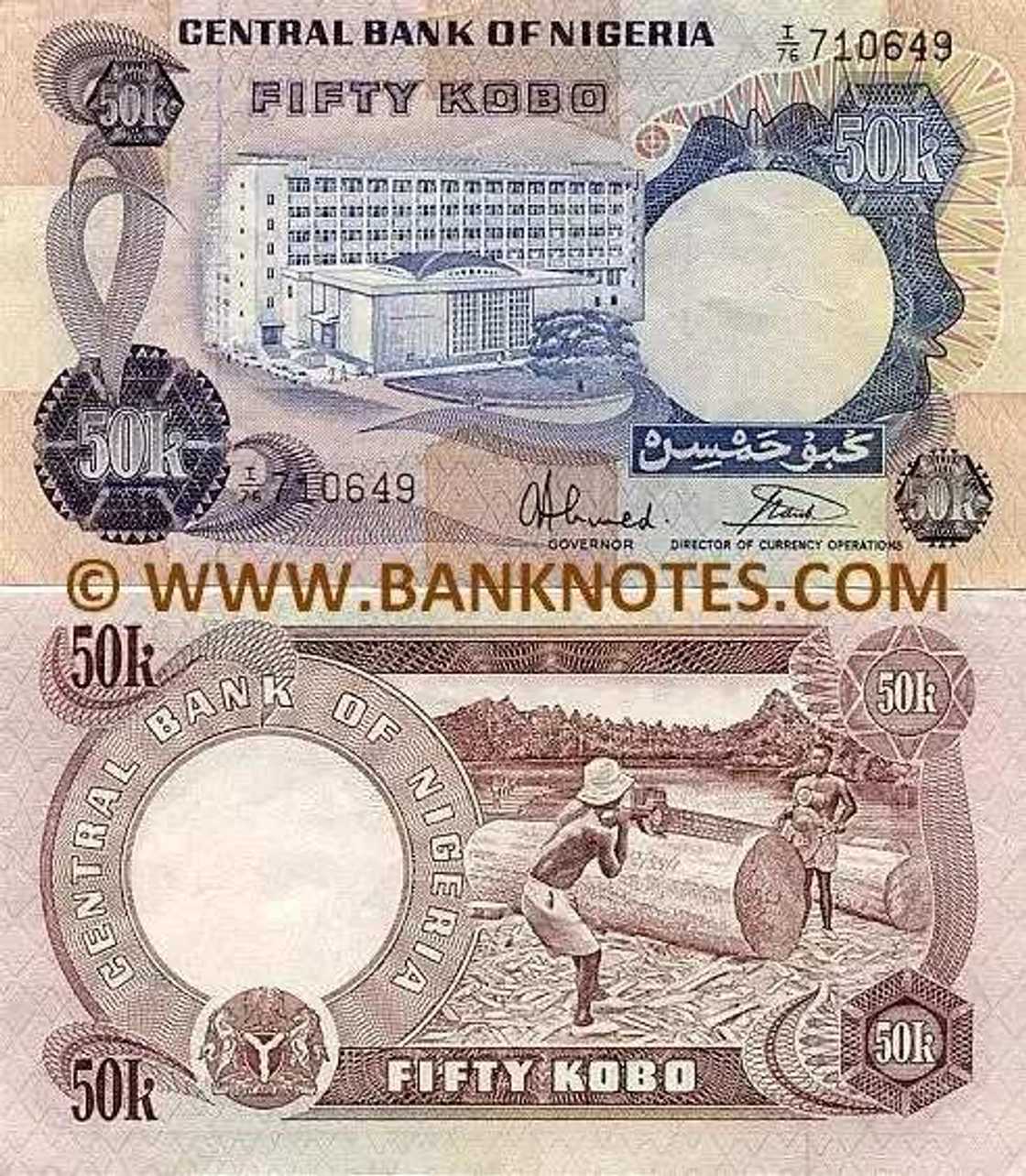
8. The one Naira note:
The one Naira note was introduced in January, 1973, by the Central Bank of Nigeria.
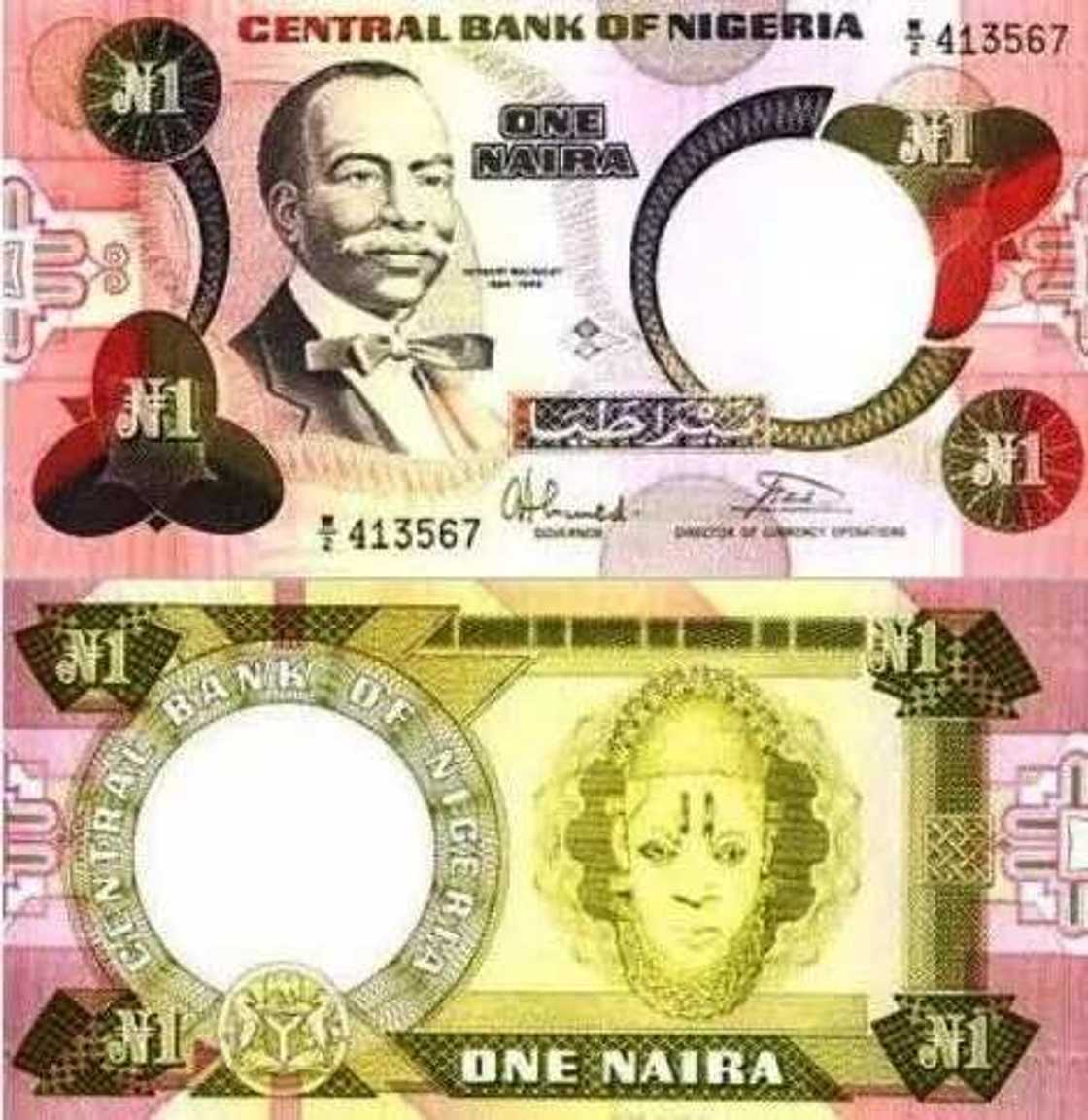
9. The five Naira note:
The five Naira note was first introduced in 1973, The green-coloured note bore the engraved portrait of Alhaji Sir Abubakar Tafawa Balewa who was the first prime minister of Nigeria. In 1984, the colours of the note were changed to mauve (a mix of pink and purple), and in 2007, the notes were changed from paper to polymer notes.
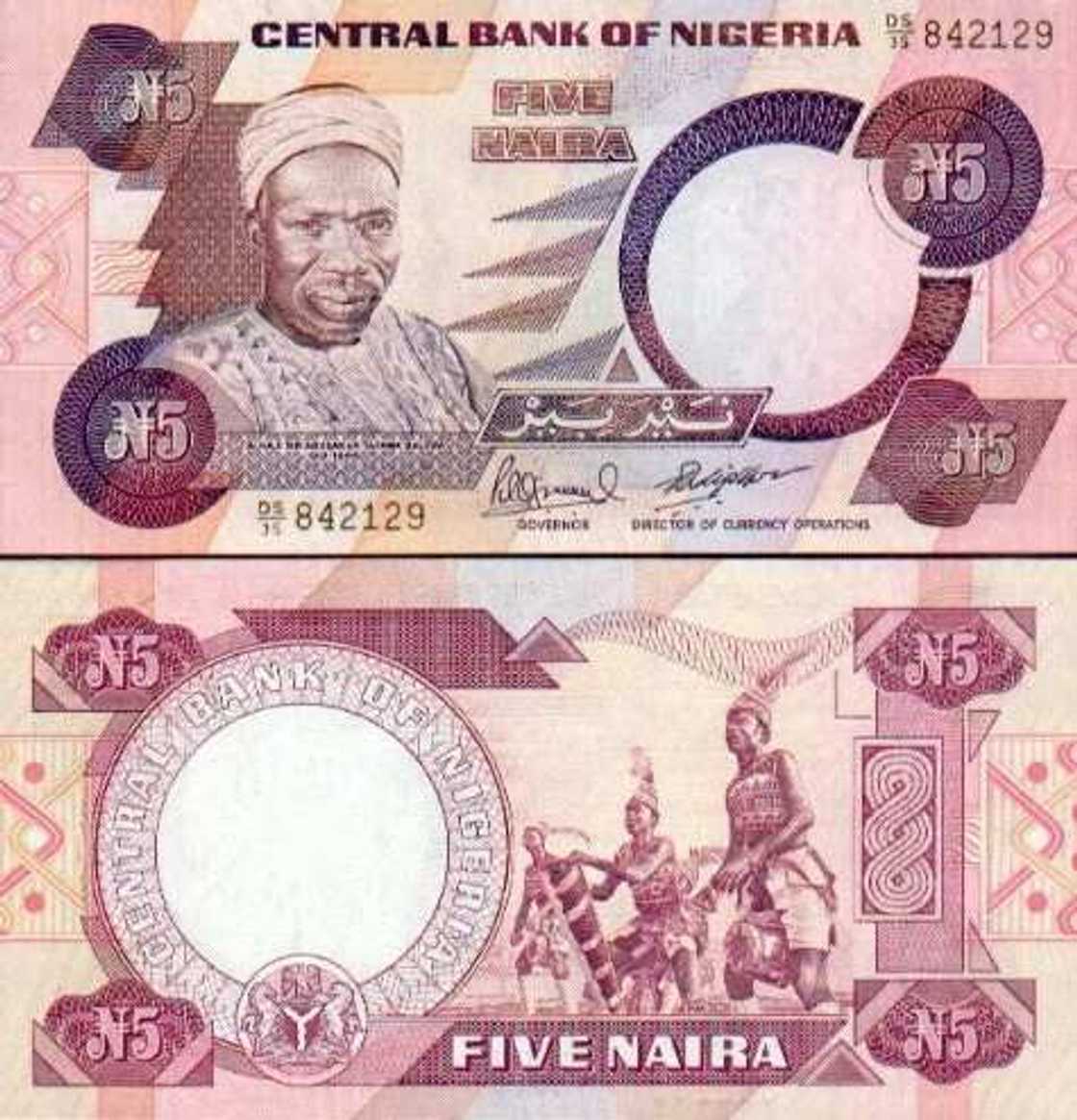
The new polymer notes were circulated in 2007 and have remained in the market, even though the money itself may have reduced in value.
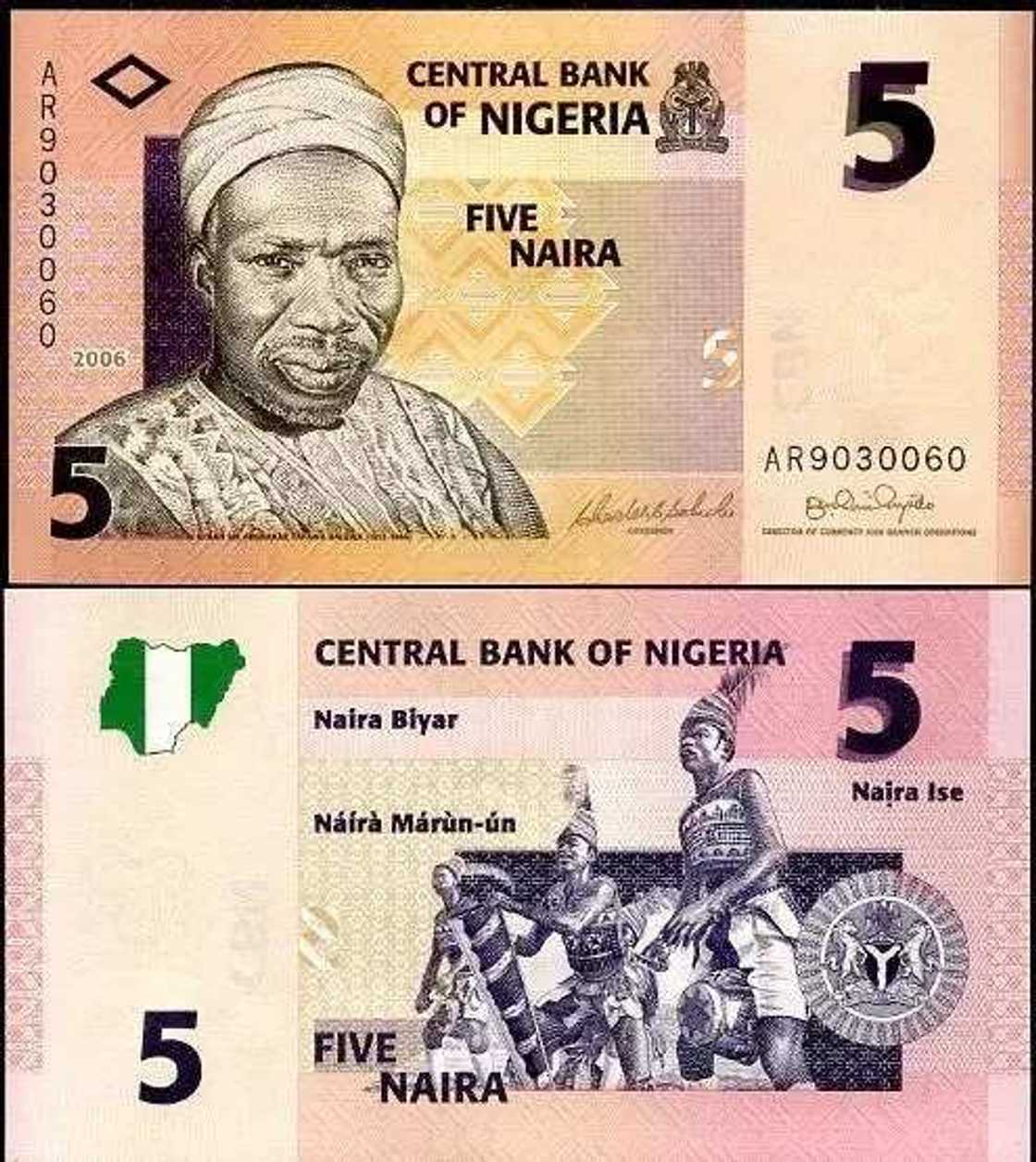
10. The ten Naira note:
The 10 Naira note was also issued first in 1973, and is engraved with the portrait of Dr Alvan Ikoku, an educator and politician. The back is engraved with a picture of Fulani milk maids from northern Nigeria.
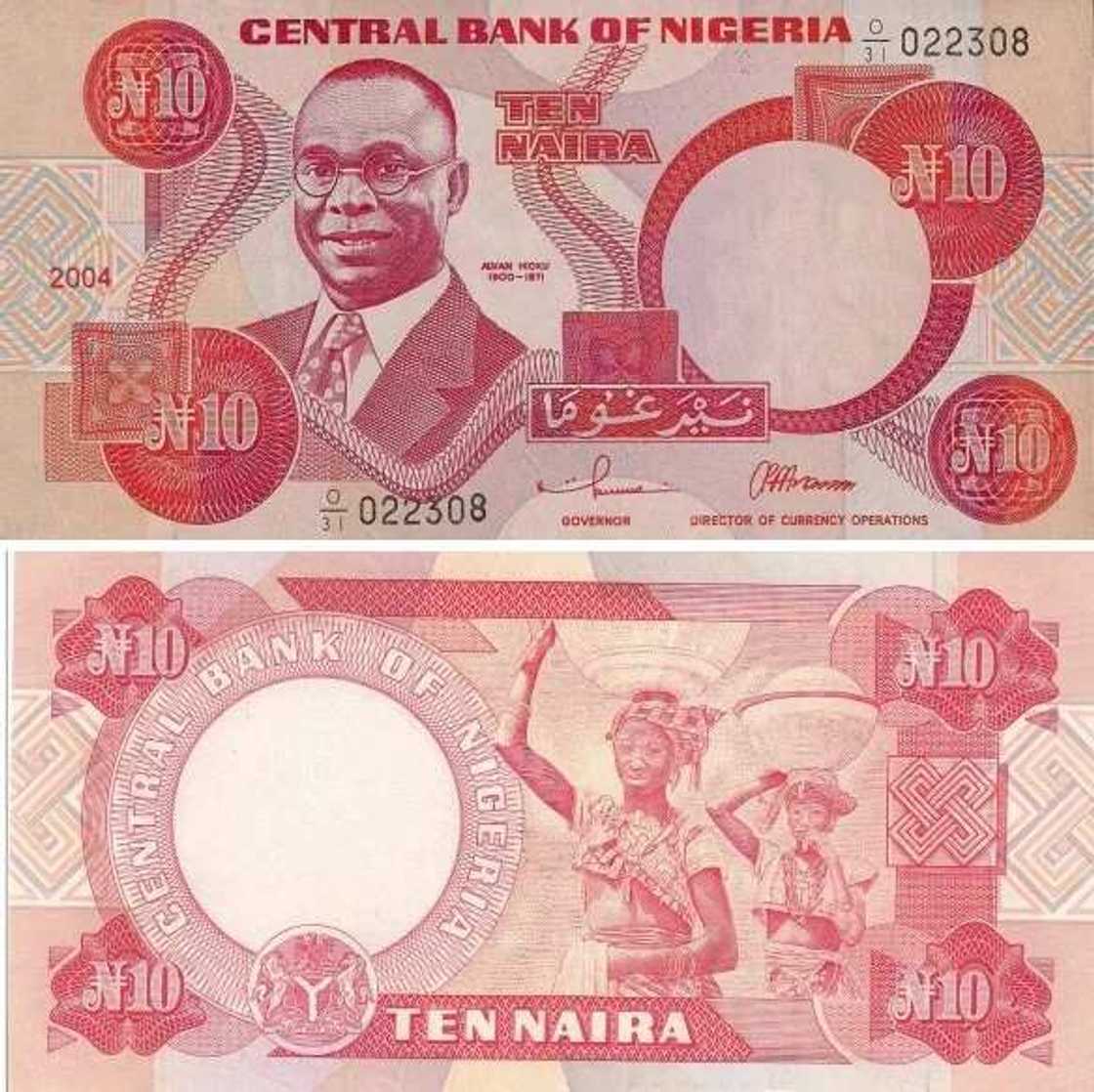
The 10 Naira note was reintroduced as polymer notes in 2007, and have remained in circulation.
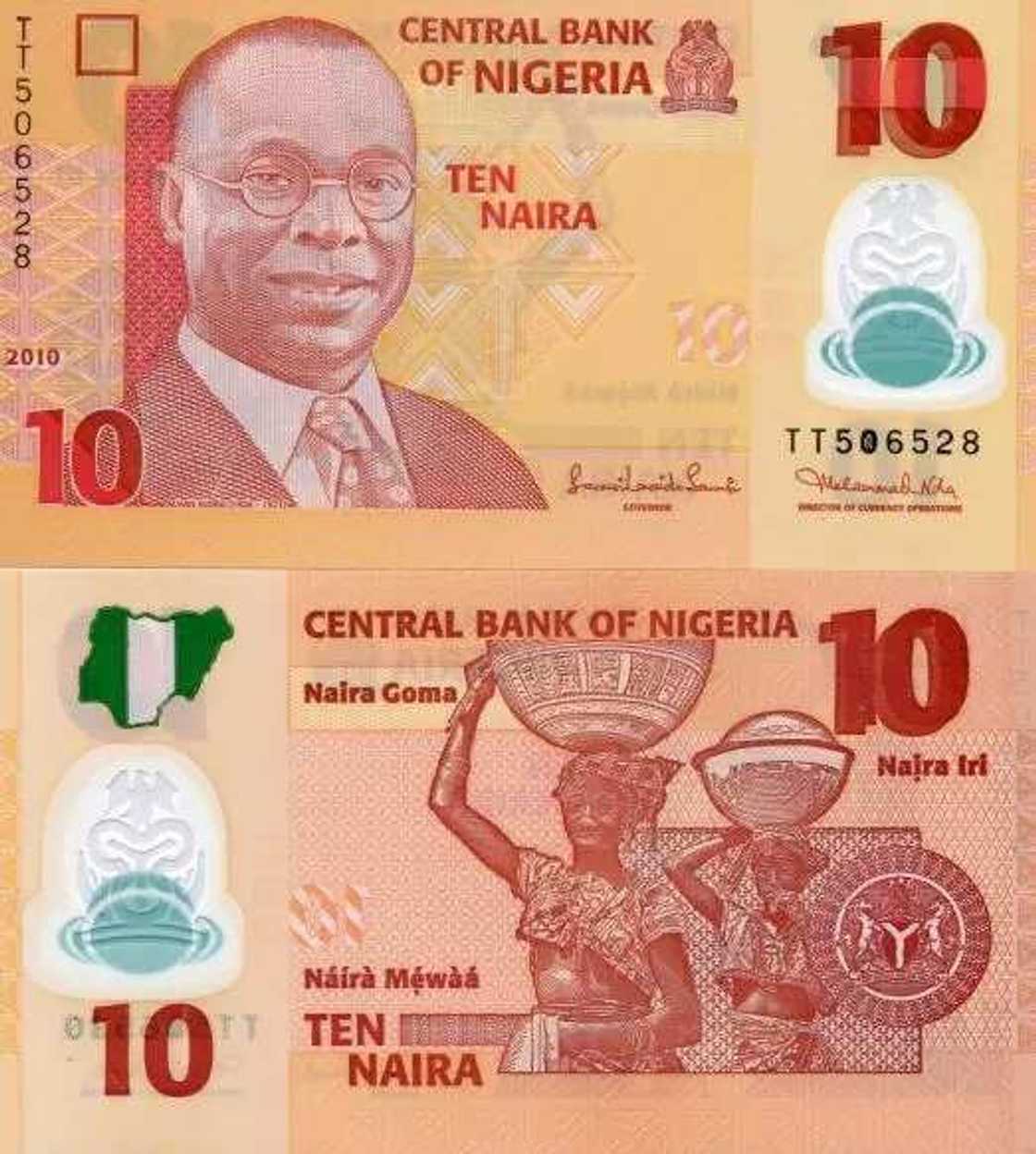
11. The 20 Naira note:
The 20 Naira note was first introduced as paper notes in 1973, and shows the engraved portrait of General Murtala Muhammed, a former Nigerian military ruler. The notes were eventually changed to polymer notes in 2007.
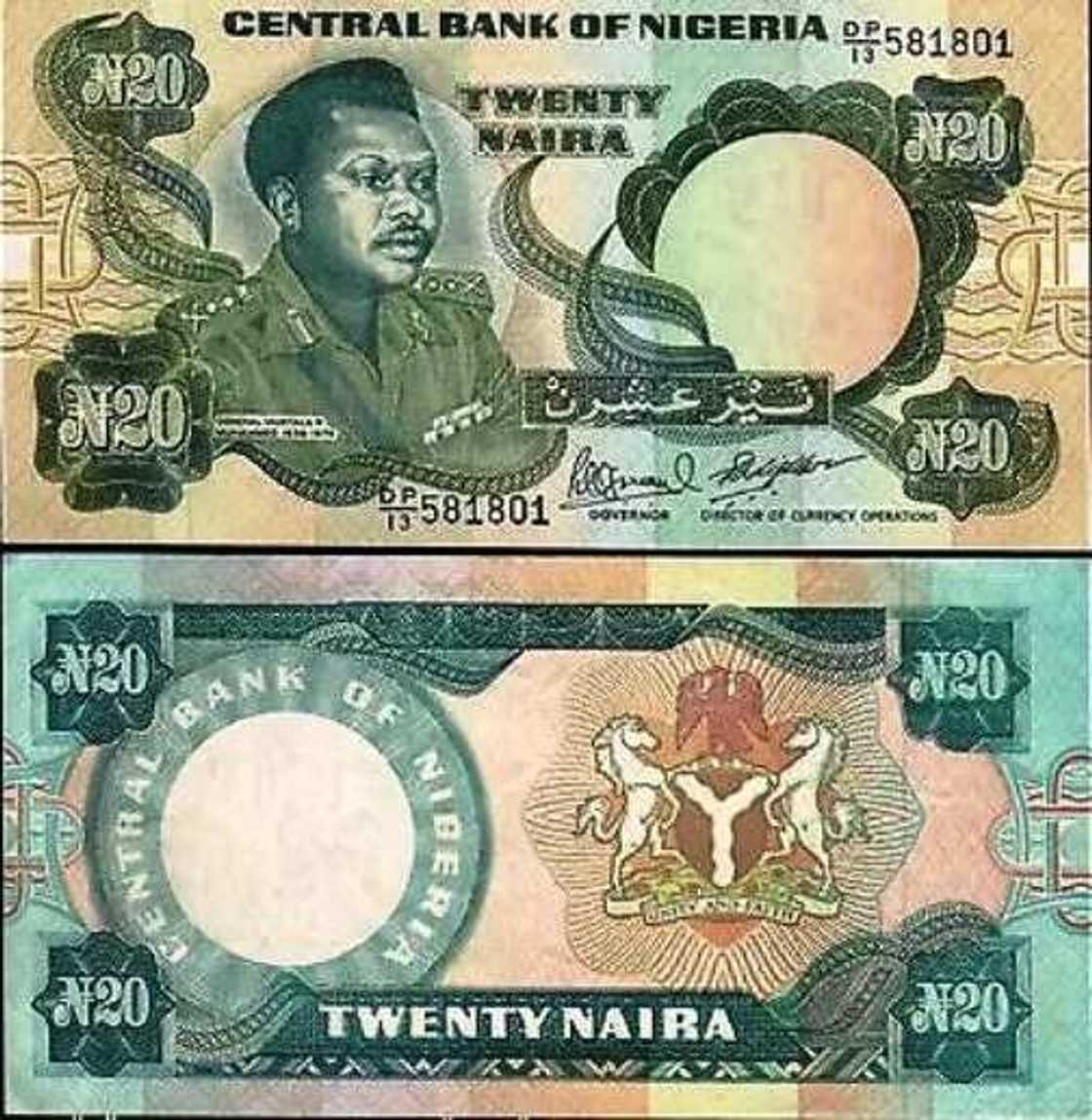
The polymer notes are still in circulation till date, the back of the polymer shows Ladi Kwali, a popular female potter.
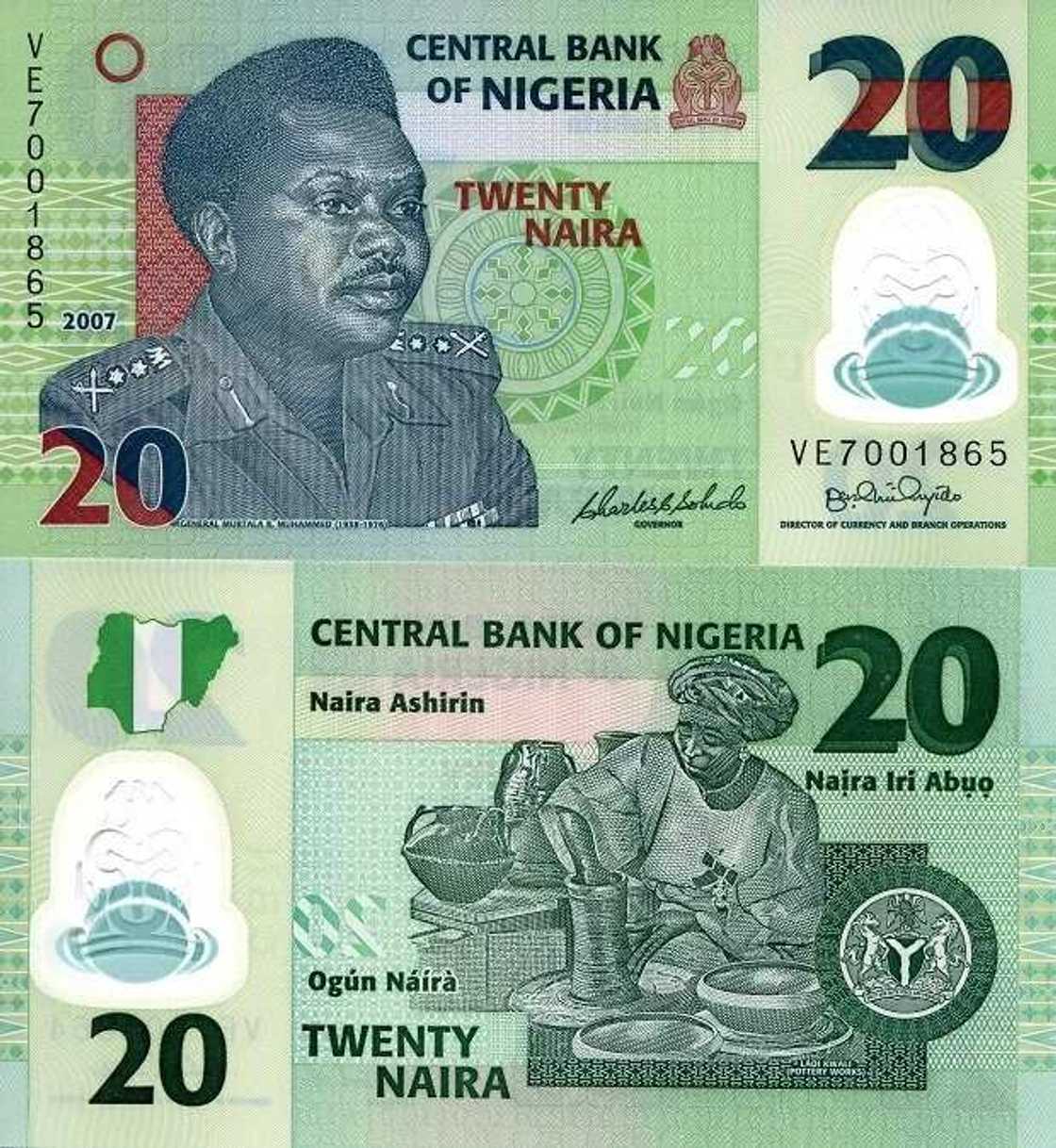
12. The 50 Naira note:
The 50 Naira note was the highest denomination in 1991 when it was first introduced into the Nigerian market. The back of the banknote depicted farmers working hard at their farm.
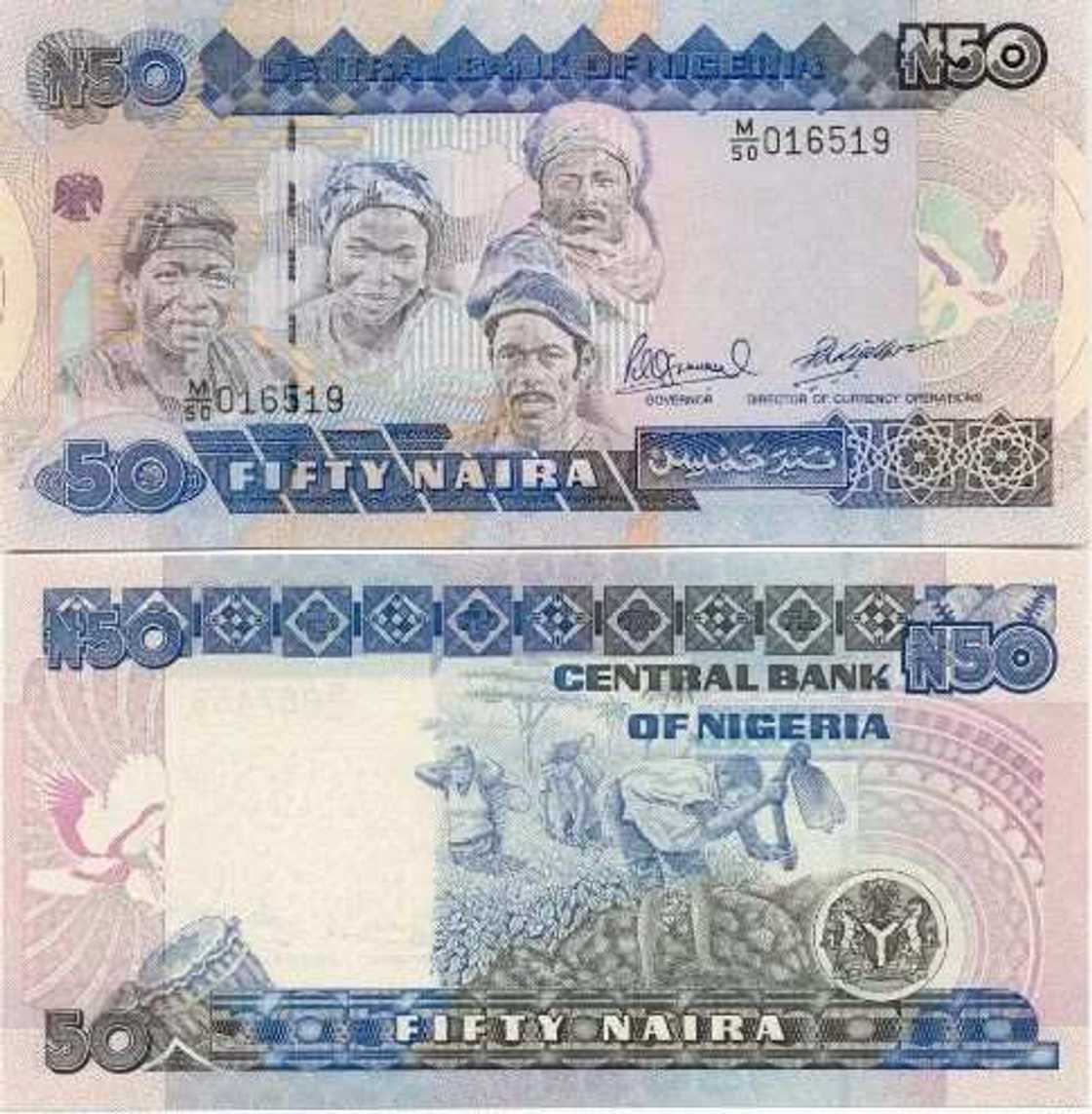
The note was later changed to polymer in 2007, and the back was later changed to depict fishermen holding their big catch.
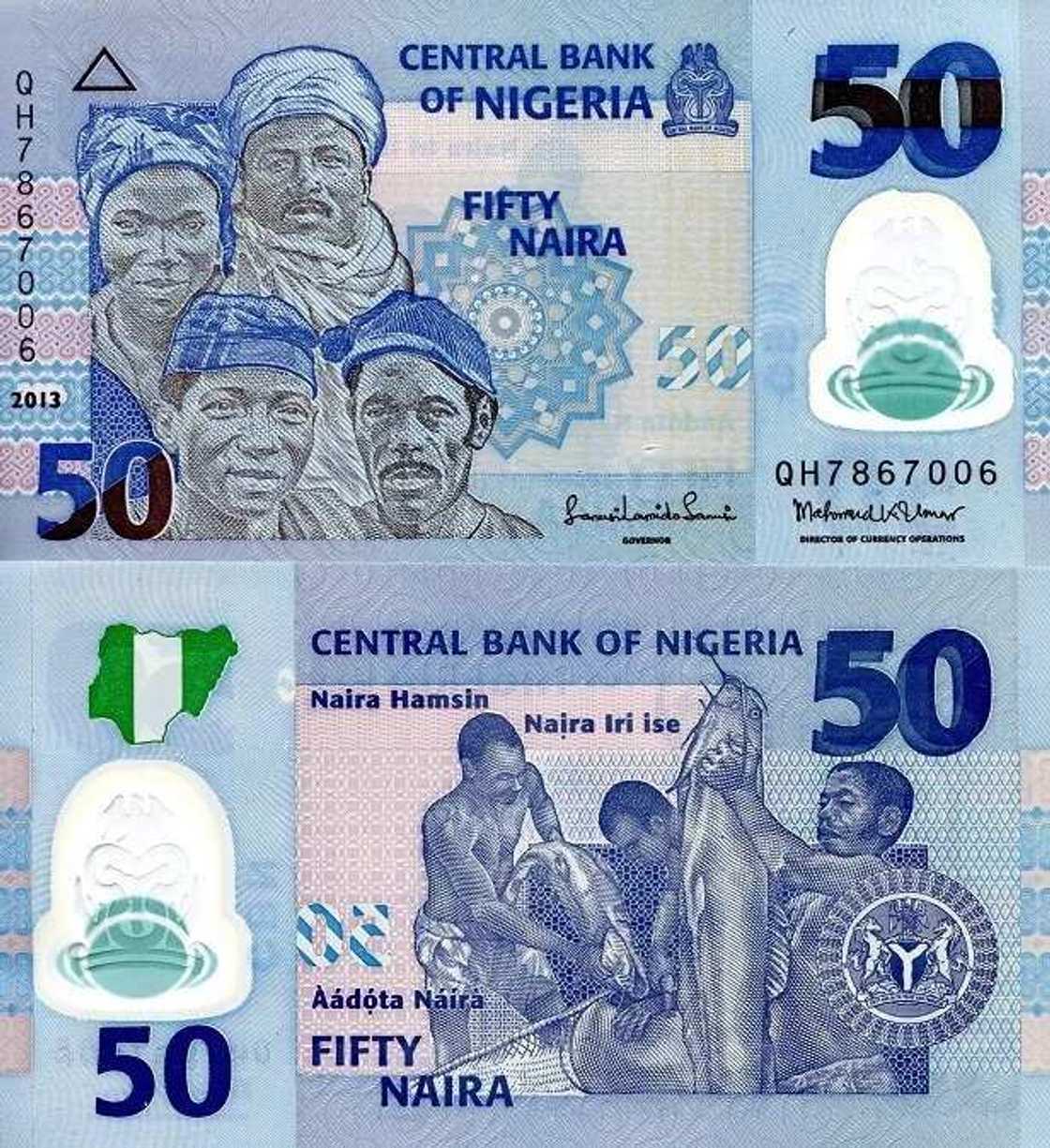
13. The 100 Naira note:
The hundred Naira note was first introduced in December 1999. The note shows the engraved portrait of Chief Obafemi Awolowo, a former premier of the western region. The back shows the popular Zuma rock, located in Niger state.
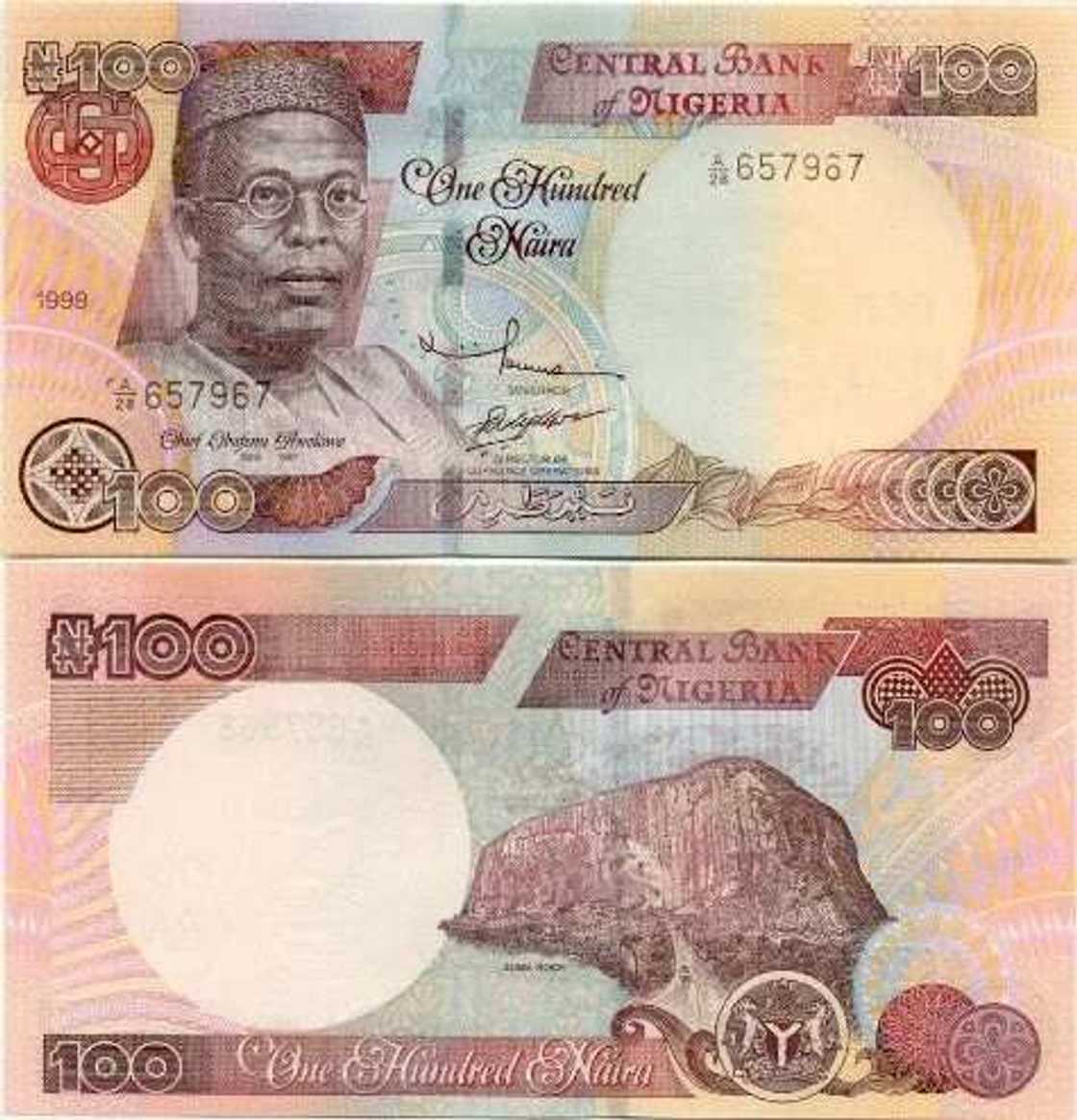
The 100 Naira note was eventually changed on November 12, 2014 in commemoration of Nigeria’s 100 years of existence. The colour of the note was changed and the back was changed from Zuma rock to traditional dancers showing off their skills. The note also features a QR code which launches a website about Nigeria’s history when scanned (bet you didn't know this).
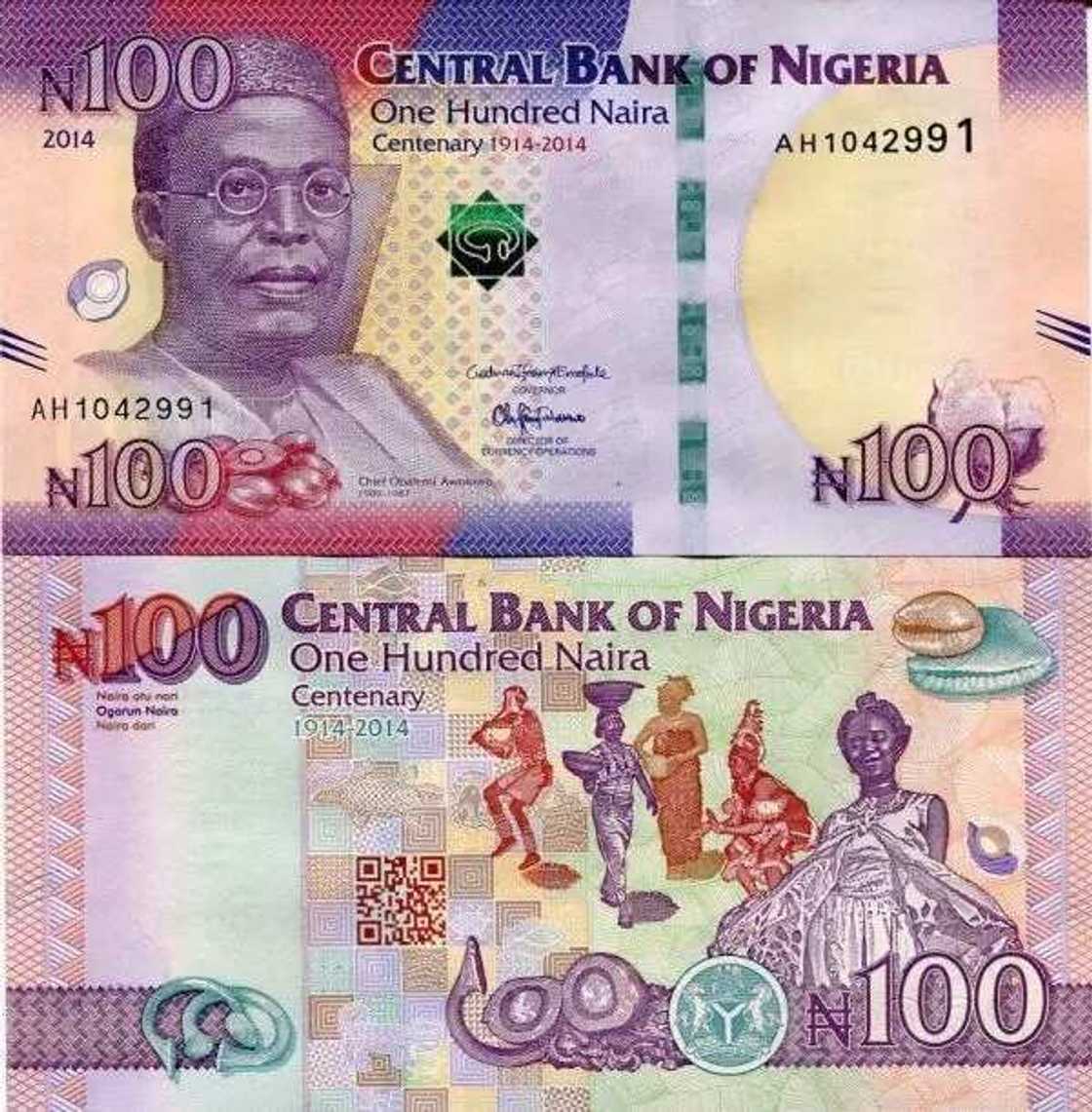
14. The 200 Naira note:
The 200 Naira note was introduced in 2000, and shows the engraved portrait of Alhaji Sir Ahmadu Bello, the first Premier of Northern Nigeria. The back shows Pyramid of bags of agricultural commodity, fruits, vegetables, cattle and livestock farming. This probably refers to those early days of trade by barter, or shows that Nigeria is a country that is rich in agriculture.
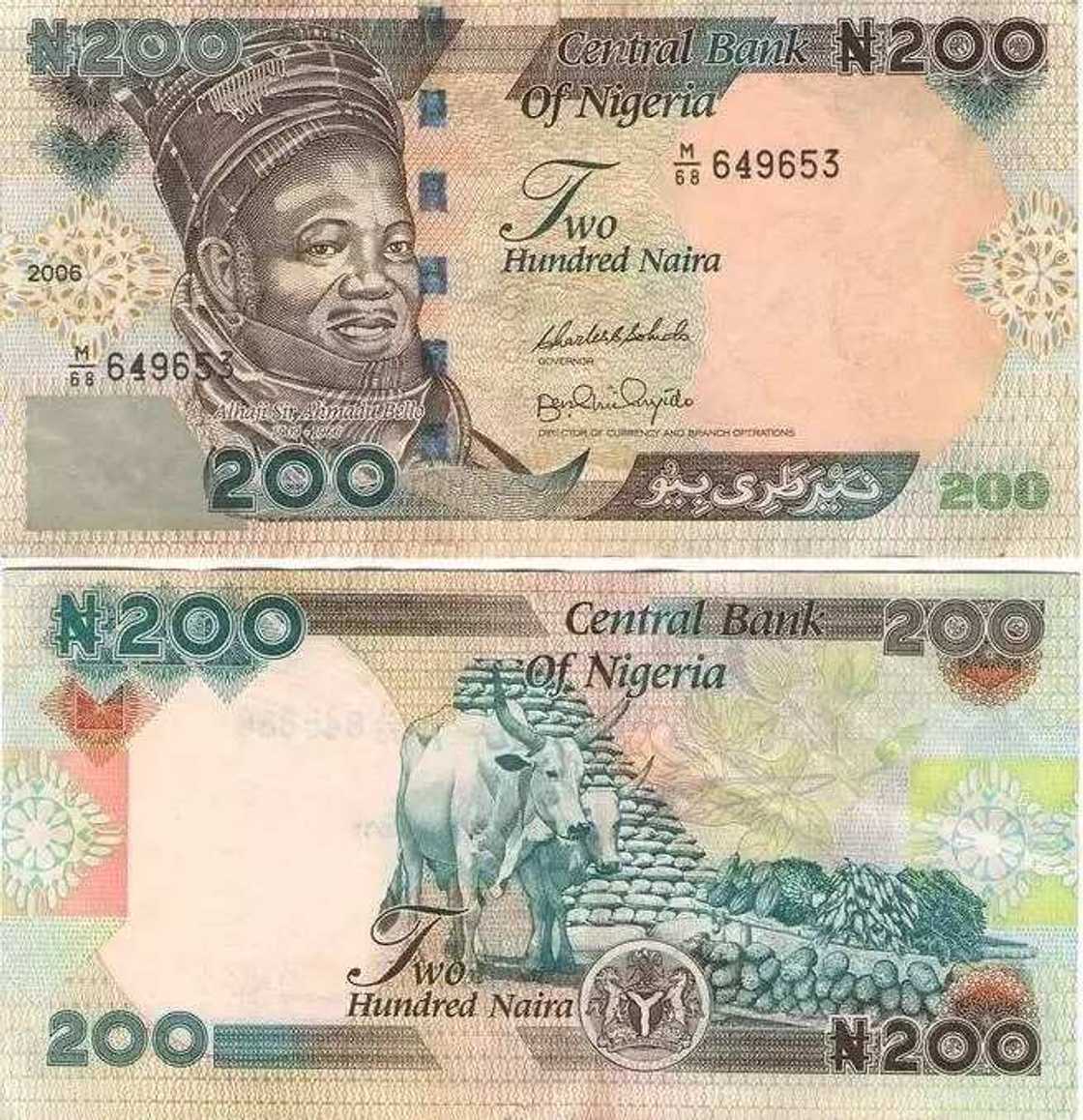
15. The 500 Naira note:
The 500 Naira note was introduced in 2001, and shows the engraved portrait of Dr Nnamdi Azikiwe, the first President of the Federal Republic of Nigeria. The back shows a picture of an offshore oil rig (why not? Nigeria is known for its oil after all).
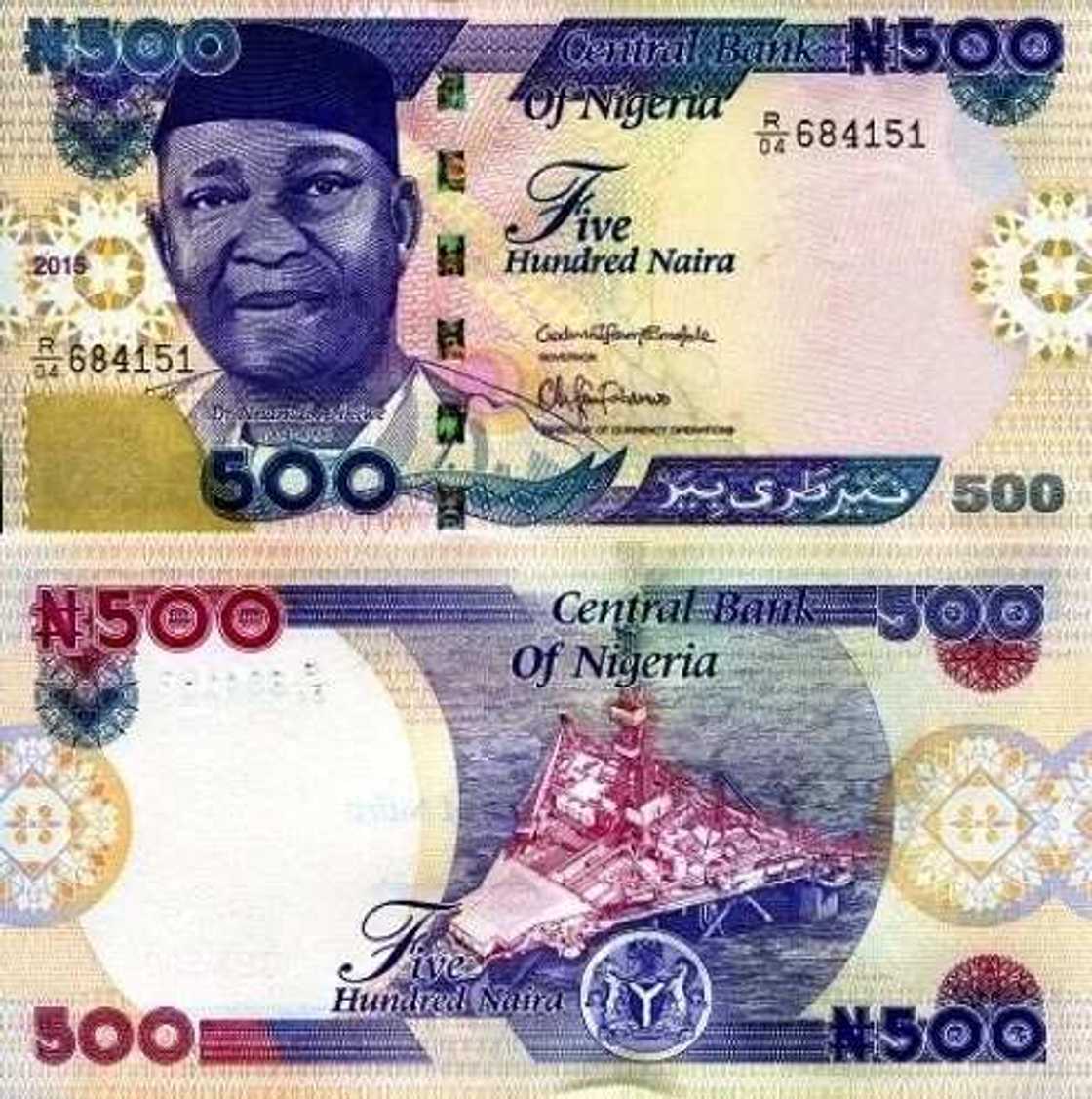
16. The 1000 Naira note:
The 1000 Naira note was introduced in 2005, becoming the highest denomination of the nation's currency. It is also the only Nigerian banknote that has the engraved portrait of two prominent Nigerians, Alhaji Aliyu Mai Bornu and Dr. Clement Isong, who were the first and second indigenous Governors of the Central Bank of Nigeria. The back shows a picture of the Central Bank of Nigeria's corporate Head Office in Abuja.
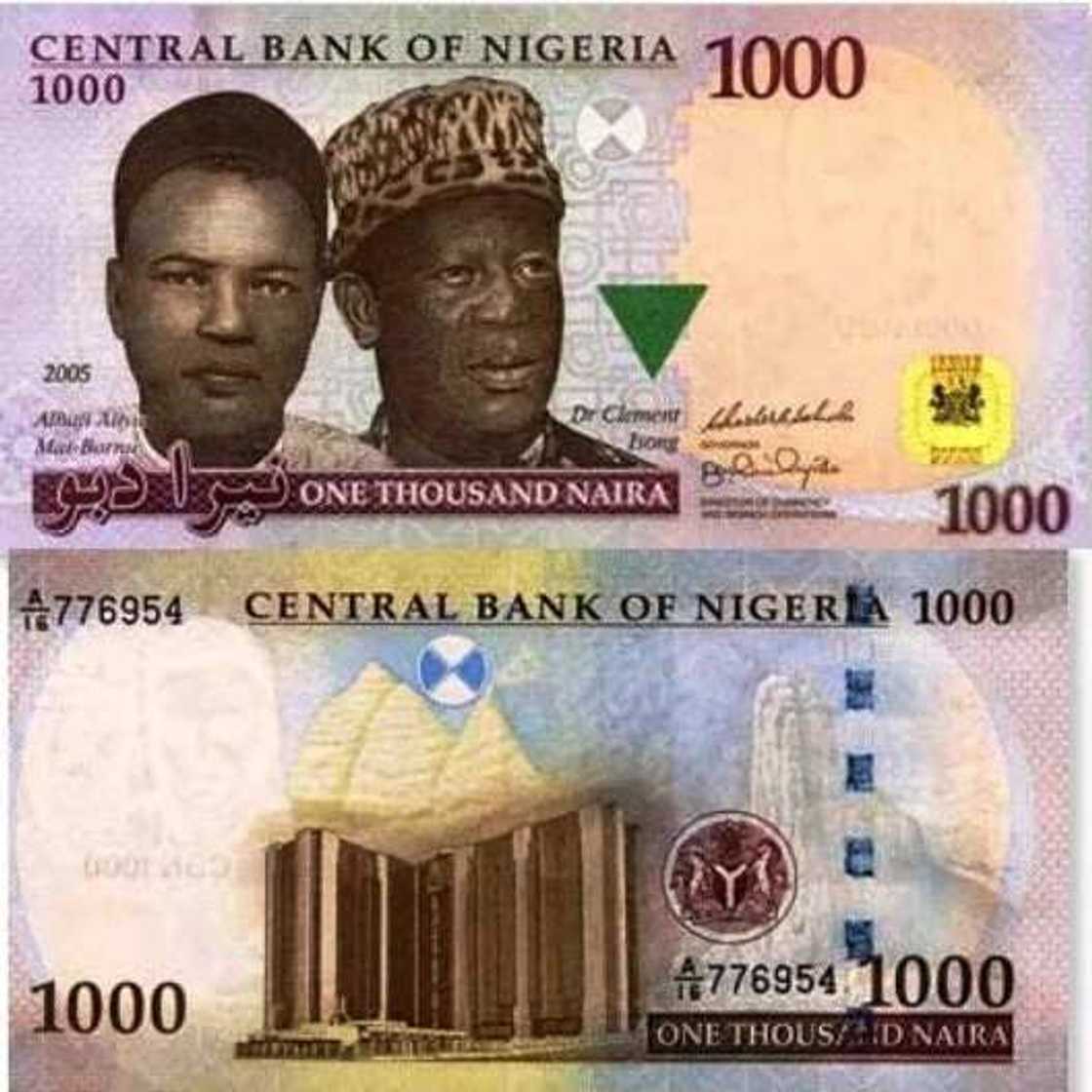
So far, only the polymer notes have the three major Nigerian languages, Igbo, Hausa and Yoruba, inscribed on them. They are also the only notes bearing the Nigerian flag.
17. The 'coins era':
There was a time when coins were the 'it' thing. The Pence were mostly made from Gold, while the Shillings were made from Silver. These days they have become 'extinct' and even the Central Bank of Nigeria tried to bring them back into circulation with the introduction of the N2 coin, it didn't catch on as the value of the Naira has been on a steady decline.
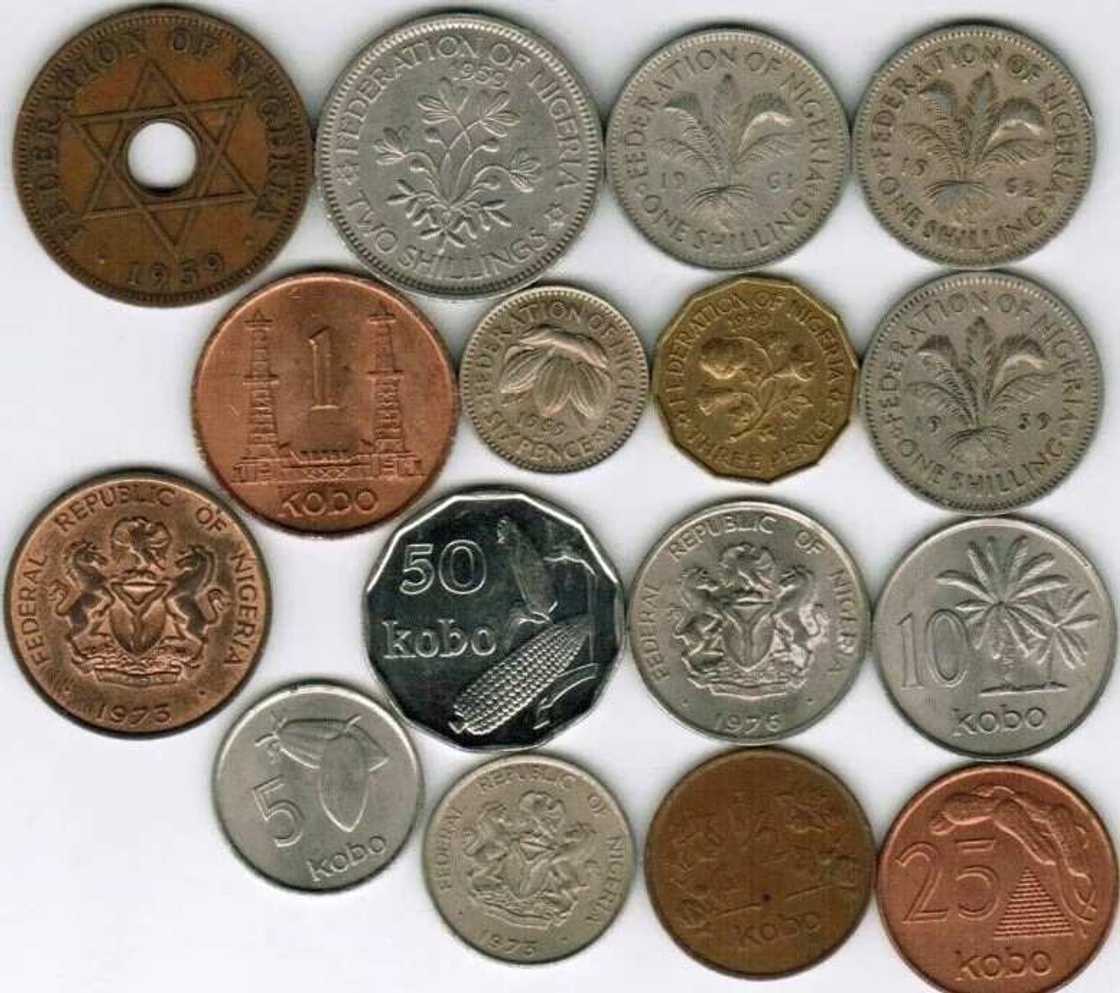
These coins below could be called the 'big boys' of the Nigerian coins, as they were introduced much later in 2007. The 50 Kobo coin was made from the Nickel, the N1 coin was made from Brass plated steel, the N2 coins were made with Copper plated Steel.
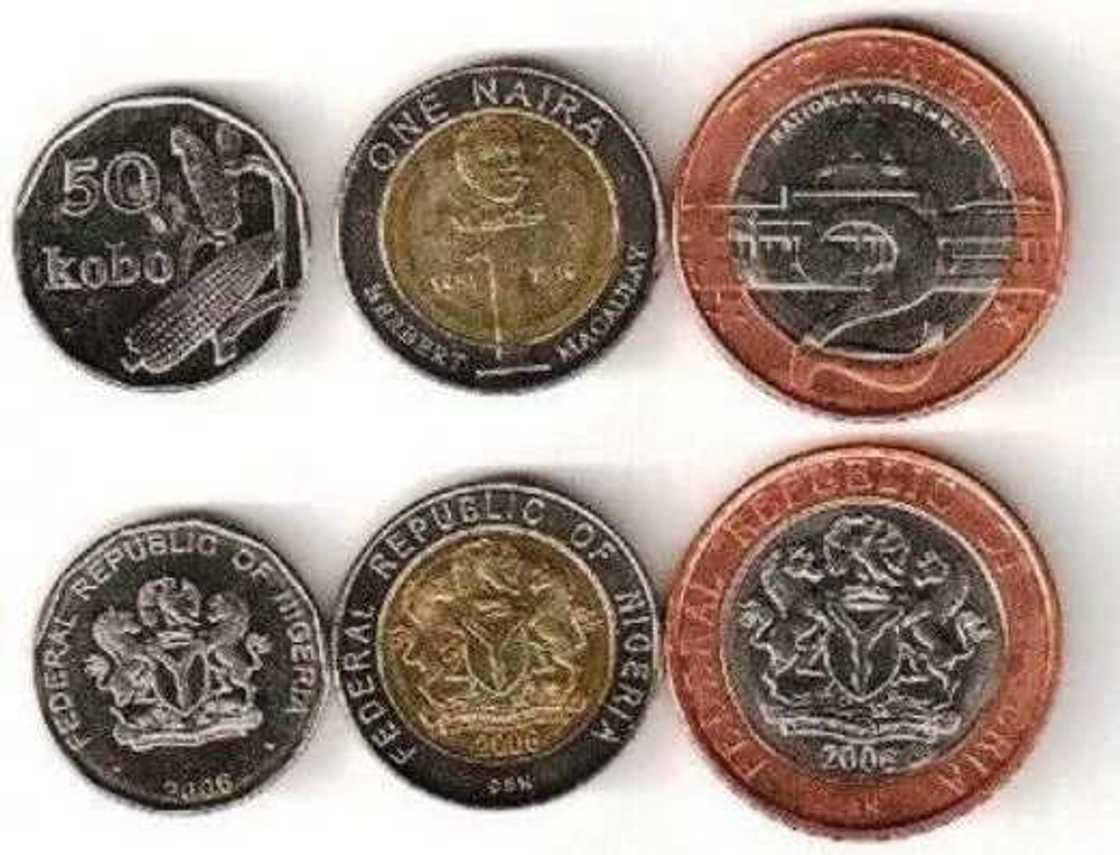
How much about these currencies can you remember?
With the present economic recession in the country, which of these currencies would you prefer to be using as a Nigerian?
SOURCE: Central Bank of Nigeria website, Banknotes.com
Source: Legit.ng


